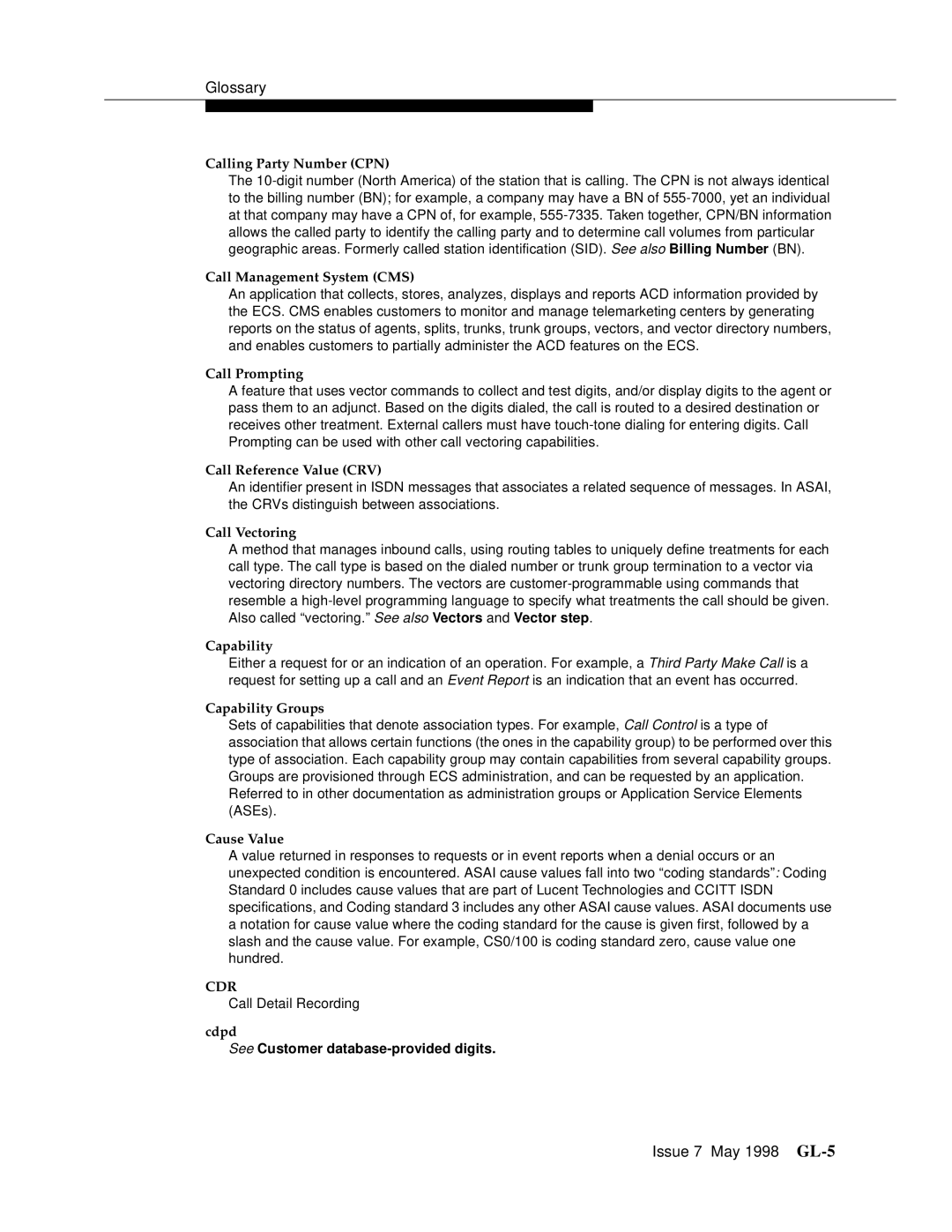Glossary
Calling Party Number (CPN)
The
Call Management System (CMS)
An application that collects, stores, analyzes, displays and reports ACD information provided by the ECS. CMS enables customers to monitor and manage telemarketing centers by generating reports on the status of agents, splits, trunks, trunk groups, vectors, and vector directory numbers, and enables customers to partially administer the ACD features on the ECS.
Call Prompting
A feature that uses vector commands to collect and test digits, and/or display digits to the agent or pass them to an adjunct. Based on the digits dialed, the call is routed to a desired destination or receives other treatment. External callers must have
Call Reference Value (CRV)
An identifier present in ISDN messages that associates a related sequence of messages. In ASAI, the CRVs distinguish between associations.
Call Vectoring
A method that manages inbound calls, using routing tables to uniquely define treatments for each call type. The call type is based on the dialed number or trunk group termination to a vector via vectoring directory numbers. The vectors are
Capability
Either a request for or an indication of an operation. For example, a Third Party Make Call is a request for setting up a call and an Event Report is an indication that an event has occurred.
Capability Groups
Sets of capabilities that denote association types. For example, Call Control is a type of association that allows certain functions (the ones in the capability group) to be performed over this type of association. Each capability group may contain capabilities from several capability groups. Groups are provisioned through ECS administration, and can be requested by an application. Referred to in other documentation as administration groups or Application Service Elements (ASEs).
Cause Value
A value returned in responses to requests or in event reports when a denial occurs or an unexpected condition is encountered. ASAI cause values fall into two “coding standards” : Coding Standard 0 includes cause values that are part of Lucent Technologies and CCITT ISDN specifications, and Coding standard 3 includes any other ASAI cause values. ASAI documents use a notation for cause value where the coding standard for the cause is given first, followed by a slash and the cause value. For example, CS0/100 is coding standard zero, cause value one hundred.
CDR
Call Detail Recording
cdpd
See Customer
